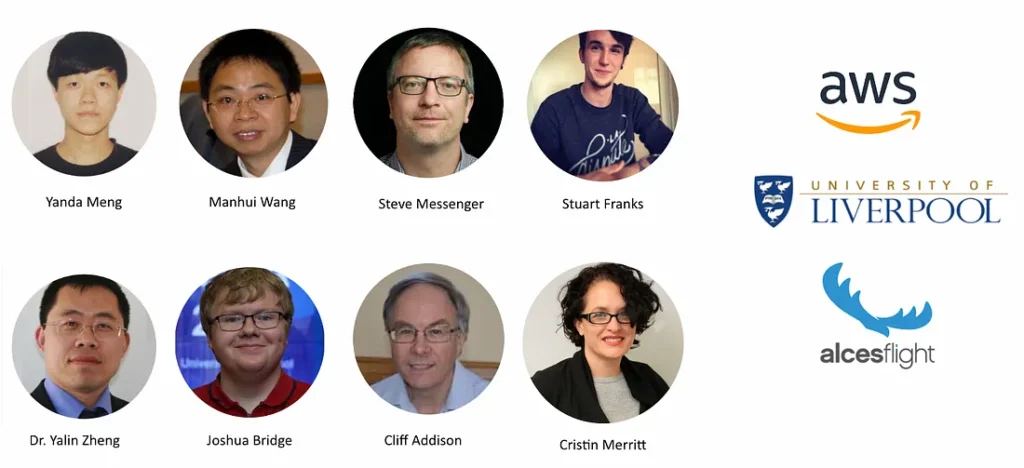The HPC team members for the COVID-19 project included Liverpool ARC, the Department of Vision and Science at the University of Liverpool, Amazon Web Services (AWS) and Alces Flight. Team Member not in group photo, Maria Mackey.
No matter how you slice it, the University of Liverpool has worked out a way to diagnose possible COVID-19 cases from CT scans. The science involved harnessing uncertainty-aware consensus-assisted multiple instance learning (UC-MIL) to come up with a new bilateral adaptive graph-based (BA-GCN) model diagnose COVID-19. For those who aren’t medical imaging experts, this means the team at the University of Liverpool has learned how to segment (aka ‘slice’) scans of lungs so that they could train supercomputers to pick up areas of concern (aka potential COVID-19 cases) faster than ever before.
Their model is showing huge promise. Started in 2020 during the height of the pandemic the team, headed by Dr. Yalin Zheng, commenced what would turn out to be a two-year journey to building and refining their work to publication and public distribution levels. Utilising both their on-premises HPC cluster, Barkla, and AWS public cloud to test their theories, the team’s achievements include the largest manual annotation dataset so far with 7,768 slices from COVID-19 patients.
The team at Alces Flight is proud to be a part of this project in our work building and managing the on-premises and cloud HPC environments for the university. We are also grateful to the team at Amazon Web Services (AWS) who secured grants and resources to ensure their cloud work was unfettered by restrictions.
The full publication, now live in the Medical Image Analysis journal, can be found here.
An HPC-focused overview of their research can be seen here.
A brief success story, part of the 2020 HPCWire Reader’s Choice Nominations, can be read here.


